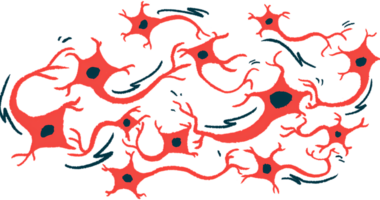Nerve Cell Lines Derived From Stem Cells of PPMI Study Donors Created

Fujifilm Cellular Dynamics reported that it has developed, using stem cells from people with Parkinson’s disease, dopaminergic neurons containing two common, disease-associated mutations for use in Parkinson’s research.
Stem cell donors were patients involved in the Parkinson’s Progression Markers Initiative (PPMI) through the Michael J. Fox Foundation for Parkinson’s Research (MJFF).
Called iCell DopaNeurons, these cells can be used as tools for advancing work into potential new Parkinson’s therapies, Fujifilm stated in a press release. Researchers also will have access to clinical, imaging, genetic and biological data from the PPMI study.
“The [stem cells] generated from [Parkinson’s] donors in MJFF’s landmark PPMI study enabled us to develop much-needed cellular tools to advance the discovery and development of therapeutic treatments for Parkinson’s disease,” said Keith R. Olson, PhD, the company’s senior vice president of commercial operations. Fujifilm Cellular Dynamics specializes in stem cell products.
Mutations in the leucine-rich repeat kinase-2 (LRRK2) and glucocerebrosidase (GBA) genes have been linked to an increased risk of Parkinson’s.
Stem cells are cells that can be manipulated to give rise to almost any type of cell in the body. Their progeny will contain the same mutations.
Fujifilm used stem cells from patients with either the G2019S mutation in the LRRK2 gene or the N370S mutation in GBA gene to generate dopamine-producing nerve cells, those mostly affected in Parkinson’s, that will harbor these mutations.
The company reported that these cells exhibit many of the features of patients’ cells, including altered dopamine metabolism, increased accumulation of the toxic alpha synuclein protein, and greater nerve cell loss compared with control cells harboring no mutations.
These cells can be used to study disease mechanisms and screen potential therapeutics, Fujifilm stated, adding that its expertise in developing such cell lines will ensure that researchers have a steady supply of high quality cells.
“We anticipate human stem cell-derived disease models, such as the iCell DopaNeurons for LRRK2 and GBA mutations, will become the standard for research and development of disease modifying therapeutics for Parkinson’s disease patients,” Olson said.
PPMI, also known as PPMI 2.0, is a longitudinal, observational study (NCT04477785) of people with and without Parkinson’s disease. At participating medical sites, clinical, genetic, imaging, and other biological data are collected with the aim of identifying biomarkers associated with Parkinson’s risk and progression. The hope is that information gained through PPMI will inform the development of better treatments.
Last year, PPMI launched an online survey platform, called PPMI Online (NCT05065060), to supplement this work. The platform collects health data from adult volunteers in the U.S. every three months.
Both the in-person and online portions of PPMI are seeking adults with or without Parkinson’s to participate.
PPMI Online is particularly interested in people diagnosed with Parkinson’s in the past two years but not yet on treatment. Adults age 60 and older with a Parkinson’s risk factor — like a close relative with Parkinson’s, a known disease-associated mutation, and/or acting out dreams in their sleep (REM sleep behavior disorder) — and people with no known connection to Parkinson’s as a control group also are being enrolled.
While data from PPMI are freely available to researchers, collected information is always de-identified, meaning that all participants’ private medical information is protected.
“These dopaminergic neurons are an extension of PPMI’s resource for discovery and therapeutic development,” said Nicole K. Polinski, PhD, the foundation’s director of research resources. “MJFF is dedicated to sharing research tools that will expedite our commitment to finding a cure and improving therapies for those living with the condition today.”







